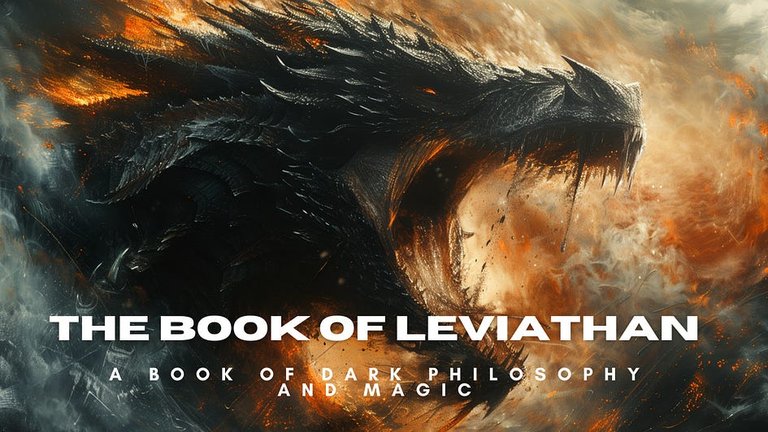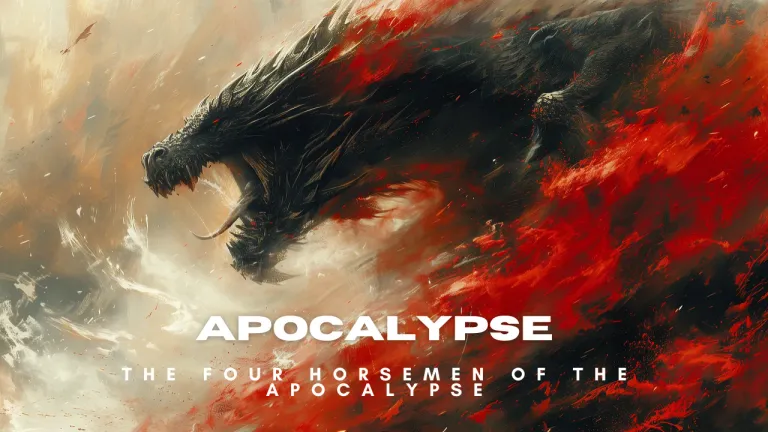The Book Of Leviathan

A Controversial Book of Dark Philosophy and Magic
The Satanic Bible is not a book typically found in most libraries or bookstores. Instead, it is a collection of essays, observations, and rituals that articulate the worldview and practices of LaVeyan Satanism, a religion founded by Anton LaVey in 1966. LaVeyan Satanism is a form of atheistic Satanism that dismisses the existence of supernatural beings and promotes rational self-interest, individualism, and hedonism.
First published in 1969 by Avon Books, The Satanic Bible has sold over one million copies. It is regarded as the most influential text in modern Satanism and has inspired many other books, groups, and movements that share its philosophy and aesthetics.
The book is divided into four sections, each named after a biblical figure associated with Satan: The Book of Satan, The Book of Lucifer, The Book of Belial, and The Book of Leviathan. Each section contains chapters that cover various topics related to Satanism, such as ethics, psychology, sexuality, magic, and ritual.
The Book of Satan challenges traditional moral values found in Christianity and Judaism, such as the Ten Commandments and the Golden Rule. It advocates for a life of indulgence, pleasure, and vengeance, rather than abstinence, sacrifice, and forgiveness. The book praises virtues such as pride, strength, and wisdom, in contrast to humility, weakness, and faith.
The Book of Lucifer delves deeper into the core principles and beliefs of LaVeyan Satanism. It discusses concepts like love, hate, responsibility, stratification, and aesthetics. Additionally, it addresses common misconceptions and criticisms about Satanism, such as its alleged associations with crime, violence, drugs, and animal sacrifice.
The Book
The Book of Belial focuses on the theory and practice of magic and ritual within Satanism. It defines magic as “the change in situations or events by one’s will, which would otherwise not occur.” It differentiates between two types of magic: greater magic, which involves ritual and ceremony to direct one’s emotional energy toward a specific goal, and lesser magic, which is about manipulation and persuasion to influence others for personal gain. The book also provides instructions for three types of rituals: those for sex, compassion, or destruction.
The Book of Leviathan contains four invocations for different aspects of Satan: lust, compassion, destruction, and the self. It also includes the nineteen Enochian Keys (adapted from John Dee’s Enochian keys), which are believed to be magical words capable of summoning demonic forces. The book concludes with an epilogue that proclaims, “Hail Satan!”
The name “Satan” has a lengthy and complex history across various religions and cultures. It originates from the Hebrew word “satan,” meaning “adversary” or “accuser.” In the Hebrew Bible (Old Testament), it describes anyone who opposes or challenges God or His people, sometimes referring to a specific angel acting as God’s prosecutor or tester. It can also denote human enemies or nations threatening Israel.
In the New Testament (Christian Bible), Satan is more personalized and demonized, often depicted as the ultimate enemy of God and humanity. He is identified with the serpent that tempted Eve in the Garden of Eden (Genesis 3), the dragon who battled Michael and his angels in heaven (Revelation 12), and the beast that will emerge from the sea in the end times (Revelation 13).
Satan is called various names, including Lucifer (Isaiah 14), Beelzebub (Matthew 12), Abaddon (Revelation 9), and Antichrist (1 John 2). He is depicted as a fallen angel who rebelled against God due to pride and envy (Isaiah 14; Ezekiel 28) and who was cast out of heaven along with his followers (Luke 10; Revelation 12). He is portrayed as ruling over the world of darkness and evil (John 12; Ephesians 6), tempting people to sin (Matthew 4; 1 Peter 5), accusing them before God (Job 1; Revelation 12), deceiving them with false teachings (2 Corinthians 11; 1 Timothy 4), and tormenting them with diseases and afflictions (Job 2; Luke 13). He binds humanity with death and hell (Hebrews 2; Revelation 20), and he will ultimately be defeated by Jesus Christ and cast into the lake of fire (Matthew 25; Revelation 20).
In Islam, Satan is also known as Iblis or Shaitan and is considered a jinn, a type of spirit, rather than an angel. He was created from fire, while humans were made from clay. When God commanded him to bow down to Adam, the first human, he refused, claiming superiority over him. As a result, Iblis was expelled from paradise and became the enemy of God and humanity. He vowed to mislead and corrupt them until the Day of Judgment when he would be punished in hell. Iblis leads the other jinn who follows him in his rebellion. He whispers evil thoughts and suggestions into people’s hearts, trying to make them forget God and His commands. However, he has no power over those who believe in God and seek His protection.
In Judaism, Satan is not viewed as an independent or evil being but rather as an agent subservient to God, performing a necessary function in His divine plan. He is typically regarded as a metaphor for the yetzer hara, or “evil inclination,” which represents the natural tendency of humans to pursue their desires and interests, sometimes at the expense of others or in opposition to God’s will. The yetzer hara is not inherently wrong; it can lead to both good and evil depending on how it is channeled. This inclination is balanced by the yetzer tov, or “good inclination,” which is the natural tendency of humans to seek God’s approval and adhere to His laws. Satan’s role is to test and challenge people’s faith and obedience to God, providing them with opportunities for repentance and growth. He has no power over those who resist his temptations and choose to do good.
The Satanic Bible presents a different perspective on Satan and his role in human history and society. It does not worship Satan as a literal or personal being, but rather as a symbol of rebellion, freedom, individuality, and self-empowerment. The book rejects the idea of absolute morality and authority imposed by external forces, such as God, religion, or society. Instead, it embraces the concept of relative morality and authority determined by one’s own will, reason, and experience. It celebrates human nature and potential in all its aspects, both light and dark, constructive and destructive. The Satanic Bible advocates for a life of self-fulfillment, pleasure, and mastery over oneself and one’s environment. It incorporates magic and ritual to express emotions, desires, and goals, and to influence one’s reality according to one’s will.
The Satanic Bible is a controversial text that has provoked various reactions from different groups and individuals over the years. Some have praised it as a liberating and empowering manifesto that challenges the status quo and presents an alternative way of living. Others have criticized it as a dangerous and immoral document that promotes selfishness, violence, and chaos. Some have dismissed it as a joke or hoax with no serious value or relevance.
Regardless of one’s opinion, The Satanic Bible remains a fascinating and influential work that reflects the views and values of its author and followers, as well as the cultural and historical context in which it was written. It raises many questions about the nature and meaning of Satanism, religion, morality, magic, and human existence.
I will drop a link to my YouTube video about the Leviathan
Posted by Waivio guest: @waivio_cosmicsecrets

